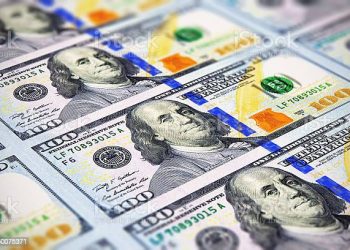The United States central bank, the Federal Reserve, has announced its decision to maintain interest rates at their current levels, marking the first time in over a year that it has chosen not to raise rates. The target for the benchmark rate will remain at 5% to 5.25% as the Federal Reserve seeks to evaluate the effects of the previous rate hikes.
In its efforts to control inflation, the central bank has already increased rates 10 times since March 2022. However, forecasts from the bank indicate that most officials anticipate further rate hikes in the future. A majority of them expect the key rate to surpass 5.5% by the end of the year, with one official predicting it could even climb above 6%.
Federal Reserve chairman Jerome Powell stated that the bank is still awaiting clear evidence of a significant slowdown in inflation, despite a noticeable decline from its peak last year when food and energy prices were affected by the war in Ukraine. Powell emphasized the need to persist in addressing inflation concerns, saying, “We’re just not seeing a lot of progress. We’re going to have to keep at it.”
According to the Labor Department’s report, consumer prices rose by 4% in the 12 months leading up to May, with a modest increase of 0.1% from the previous month. However, this figure remains higher than the bank’s targeted healthy rate of 2%, indicating a continued steady rise in prices for various items beyond food and energy.
To rein in inflation, the Federal Reserve has already elevated its benchmark rate to the highest levels seen since 2007. Following a brief pause, further rate hikes would follow a similar path taken by central banks in countries like Australia and Canada, which recently implemented rate increases after a temporary break due to persistent inflation pressures. It is expected that the European Central Bank will also raise rates in its upcoming meeting this week.
Chairman Powell mentioned that officials require time to evaluate how the economy is adjusting to the shift toward higher rates. This adjustment affects the public through increased costs for mortgages, business loans, credit cards, and other forms of borrowing. Powell suggested that given the progress made so far, it might be sensible for rates to continue rising but at a more moderate pace. Higher borrowing costs theoretically reduce demand for loans related to housing, business expansions, and other activities, eventually cooling the economy and alleviating upward pressure on prices.
Despite certain challenges, such as a significant decline in home sales, the US economy has thus far demonstrated resilience beyond expectations. Fed policymakers now project a stronger growth rate of 1% for the year, compared to earlier estimates in March. The unemployment rate is also forecasted to be lower at 4.1% than previously estimated.
However, projections also indicate less progress in controlling inflation compared to the earlier March estimates. Chairman Powell acknowledged that the Federal Reserve’s course of action in the next meeting remains uncertain but emphasized that there is no possibility of rates decreasing this year.
Following the announcement, the three major US indexes experienced declines, reflecting the expectation that rates would end the year higher than anticipated by the markets. Seema Shah, chief global strategist at Principal Asset Management, stated, “The Fed had to do something to knock market optimism today, otherwise it risked a tougher inflation fight and deeper economic woes down the line.”
Charles Lieberman, chief investment officer at Advisors Capital Management, considered the pause as a recognition of the risk posed by the Fed’s rapid rate increases of more than 5% within a span of 18 months, potentially triggering an economic slowdown and leading to significant job losses. The bank is also factoring in the impact of recent bank failures, which could further reduce lending.
Diane Swonk, chief economist at KPMG in the US, cautioned against expecting a return to lower rates in the near future. Swonk highlighted that the economy has become more prone to inflation due to various factors, including increased geopolitical tensions, a shift toward regional supply chains, and frequent disruptions in food supplies and prices caused by extreme weather events. She emphasized that a pause should not be perceived as an end, adding, “They don’t want to let their guards down yet with regard to inflation.”










